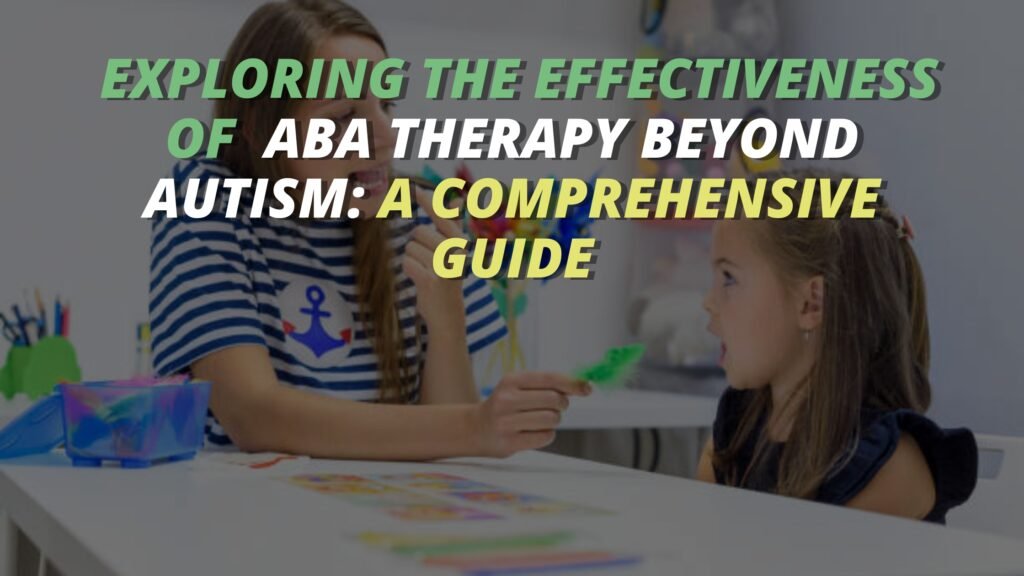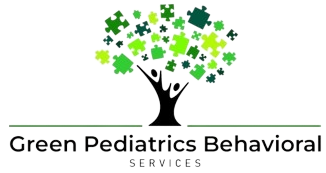
Applied Behavior Analysis (ABA) therapy is well-known for its success in treating autism. However, its applications extend far beyond autism, offering benefits for various conditions and behavioral challenges. So, is ABA therapy only for autism? This blog explores the other uses of ABA therapy and its effectiveness in addressing different needs other than autism.
ABA therapy is a structured approach that aims to improve specific behaviors through positive reinforcement and other techniques. While it is most commonly associated with autism, ABA therapy has shown to be effective for a range of other conditions and behavioral issues.
What is ABA Therapy?
ABA therapy involves applying behavioral principles to bring about meaningful changes in behavior. The core techniques include:
- Positive Reinforcement: Rewarding desired behaviors to encourage them.
- Behavior Modification: Identifying and changing problematic behaviors.
- Skill Development: Teaching new skills and improving existing ones.
These techniques are customized to the individual’s needs, making ABA therapy highly adaptable to various situations.
ABA Therapy for Autism
ABA therapy has gained recognition for its success in treating autism spectrum disorder (ASD). It helps individuals with autism develop essential life skills, improve communication, and reduce problematic behaviors. The structured and individualized nature of ABA therapy makes it particularly effective for autism.
Key Benefits for Autism
- Improved Social Skills: Enhancing interactions with others.
- Enhanced Communication: Developing verbal and non-verbal communication.
- Behavioral Management: Reducing challenging behaviors and promoting positive actions.
Beyond Autism: ABA Therapy for Other Conditions
Can ABA therapy be used beyond Autism?
ADHD (Attention-Deficit/Hyperactivity Disorder)
ABA therapy is beneficial for individuals with ADHD by helping them develop better focus, self-control, and organizational skills. Techniques such as positive reinforcement and behavior modification aid in managing impulsive behavior and improving attention.
Developmental Disabilities
ABA therapy supports individuals with various developmental disabilities, such as Down syndrome and intellectual disabilities. It focuses on enhancing daily living skills, communication, and social interactions, promoting greater independence.
Anxiety and Phobias
For individuals struggling with anxiety and phobias, ABA therapy offers strategies to reduce fear responses and develop coping mechanisms. Gradual exposure and positive reinforcement are used to manage anxiety-provoking situations.
Behavioral Issues in Children
ABA therapy addresses a wide range of behavioral issues in children, including aggression, tantrums, and non-compliance. By identifying the underlying causes and applying consistent behavior modification techniques, ABA helps in fostering better behavior patterns.
Obsessive-Compulsive Disorder (OCD)
ABA therapy aids individuals with OCD by helping them manage compulsive behaviors and intrusive thoughts. The structured approach of ABA therapy provides tools to break the cycle of compulsions and promote healthier behavior patterns.
How ABA Therapy Works
So how does ABA therapy actually work?
Assessment and Goal Setting
The process begins with a thorough assessment to identify the individual’s needs and set specific, measurable goals. This personalized approach ensures that the therapy is set to the individual’s unique requirements.
Intervention and Implementation
Based on the assessment, a customized intervention plan is developed. This plan includes specific techniques and strategies designed to achieve the desired outcomes. The intervention is implemented consistently to bring about positive changes.
Monitoring and Adjustment
Continuous monitoring of progress is a key component of ABA therapy. Regular assessments and data collection help in evaluating the effectiveness of the intervention. Adjustments are made as needed to ensure optimal results.
The Role of Caregivers and Family
Caregivers and family members play a crucial role in the success of ABA therapy. Their involvement ensures consistency and reinforces the techniques used during therapy sessions. Training and support for caregivers are essential components of a comprehensive ABA therapy program.
Tips for Caregivers
- Stay Informed: Understand the principles and techniques of ABA therapy.
- Consistency: Apply the strategies consistently in daily routines.
- Positive Reinforcement: Encourage and reward desired behaviors.
- Patience and Persistence: Behavior change takes time, so patience is key.
Why ABA Therapy is Effective
ABA therapy’s effectiveness lies in its structured, data-driven approach. By breaking down behaviors into small, manageable steps and consistently applying techniques, ABA therapy helps individuals make significant improvements. The focus on positive reinforcement and individualized plans ensures that the therapy addresses the unique needs of each person.
Future of ABA Therapy
As research continues, the applications of ABA therapy are expanding. New techniques and strategies are being developed to address an even broader range of conditions and behaviors. The future of ABA therapy looks promising, with potential benefits for many individuals beyond those with autism.
Conclusion
ABA therapy is a versatile and effective approach that extends beyond autism to address a wide range of conditions and behavioral challenges. Its structured, individualized, and evidence-based methods make it a valuable tool for improving behaviors and enhancing quality of life.
By understanding the broader applications of ABA therapy, individuals, caregivers, and professionals can harness its benefits to address diverse needs. Whether dealing with ADHD, developmental disabilities, anxiety, or other behavioral issues, ABA therapy offers a pathway to meaningful and lasting improvements.
Looking to Get Therapy?: If you or a loved one could benefit from ABA therapy, reach out to a qualified ABA therapist today to explore personalized solutions for your unique needs. Discover how ABA therapy can make a positive difference in your life beyond autism.
